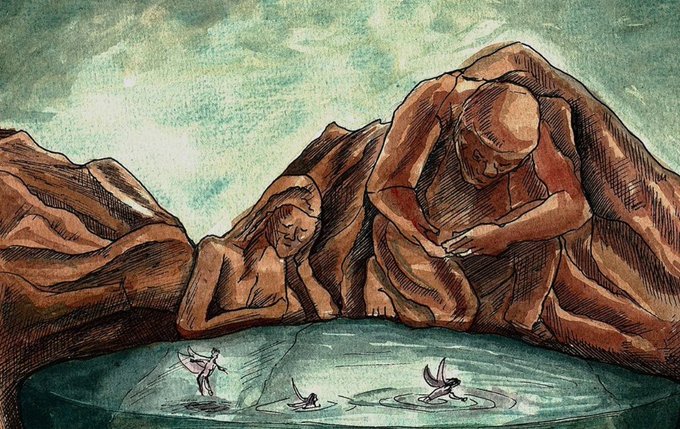- 111,139
- 834
- Origin

- Copy to clipboard
- Moderator
- #1
Source
:
.
Geography
The terrain consists of mountain ranges, undulating submontane areas, and plains surrounded by hills. In the north the mountain ranges generally run north-south; south of the Kābul River, which bisects the province from east to west, the ranges generally run east-west.
The Hindu Kush region in the north, long noted for its scenic beauty, is divided by the Kunar River into two distinct ranges: the northern Hindu Kush and the Hindu Raj. Tirich Mir rises to 25,230 feet (7,690 metres) and is the highest peak of the northern Hindu Kush. To the south of the Hindu Raj lie the rugged basins of the Panjkora, Swat, and Kandia rivers.
The Lesser Himalayas and the Sub-Himalayas are situated in the eastern part of the province and form definite ranges broken by hilly country and small plains. The region is seismically active, with frequent mild to moderate tremors. In 2005 a severe earthquake centered in nearby Azad Kashmir killed thousands.
The fertile Vale of Peshawar extends northward along the Kābul River. Though it covers less than one-tenth of the province’s area, this region contains about half of its total population.
The city of Peshawar lies in the western portion of the vale. West of Peshawar, the historic Khyber Pass is strategically important as the most easily negotiable route between Afghanistan and the Indian subcontinent. South of the Kābul River lies the east-west-trending Spīn Ghar (Safīd Kūh) Range. The Kurram, Tochi, and Gumal rivers drain the province’s southern region, and the Indus River forms part of the province’s eastern border.
The climate varies with elevation. The mountain ranges experience cold winters and cool summers, and temperatures rise markedly toward the south. Precipitation over the province is variable but averages roughly 16 inches (400 mm) annually, with much of this occurring during the period from January to April.
The mountain slopes in the north support stands of evergreen oak and pine. There are also extensive mountain grasslands. The hills to the south are sparsely covered with bushes, acacia, and grasses.
Khyber Pakhtunkhwa is inhabited mainly by the Pashtun, who are noted for their independence. The Pashtun comprise many tribes and clans, each taking great pride in its genealogy. Pashto is the main language in the province, except for some areas where Punjabi predominates, and virtually all of the population is Muslim. Only a small part of the overall population is urban. The province’s major cities include Peshawar, Mardan, Mingaora, Kohat, and Abbottabad.
The terrain consists of mountain ranges, undulating submontane areas, and plains surrounded by hills. In the north the mountain ranges generally run north-south; south of the Kābul River, which bisects the province from east to west, the ranges generally run east-west.
The Hindu Kush region in the north, long noted for its scenic beauty, is divided by the Kunar River into two distinct ranges: the northern Hindu Kush and the Hindu Raj. Tirich Mir rises to 25,230 feet (7,690 metres) and is the highest peak of the northern Hindu Kush. To the south of the Hindu Raj lie the rugged basins of the Panjkora, Swat, and Kandia rivers.
The Lesser Himalayas and the Sub-Himalayas are situated in the eastern part of the province and form definite ranges broken by hilly country and small plains. The region is seismically active, with frequent mild to moderate tremors. In 2005 a severe earthquake centered in nearby Azad Kashmir killed thousands.
The fertile Vale of Peshawar extends northward along the Kābul River. Though it covers less than one-tenth of the province’s area, this region contains about half of its total population.
The city of Peshawar lies in the western portion of the vale. West of Peshawar, the historic Khyber Pass is strategically important as the most easily negotiable route between Afghanistan and the Indian subcontinent. South of the Kābul River lies the east-west-trending Spīn Ghar (Safīd Kūh) Range. The Kurram, Tochi, and Gumal rivers drain the province’s southern region, and the Indus River forms part of the province’s eastern border.
The climate varies with elevation. The mountain ranges experience cold winters and cool summers, and temperatures rise markedly toward the south. Precipitation over the province is variable but averages roughly 16 inches (400 mm) annually, with much of this occurring during the period from January to April.
The mountain slopes in the north support stands of evergreen oak and pine. There are also extensive mountain grasslands. The hills to the south are sparsely covered with bushes, acacia, and grasses.
Khyber Pakhtunkhwa is inhabited mainly by the Pashtun, who are noted for their independence. The Pashtun comprise many tribes and clans, each taking great pride in its genealogy. Pashto is the main language in the province, except for some areas where Punjabi predominates, and virtually all of the population is Muslim. Only a small part of the overall population is urban. The province’s major cities include Peshawar, Mardan, Mingaora, Kohat, and Abbottabad.






